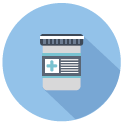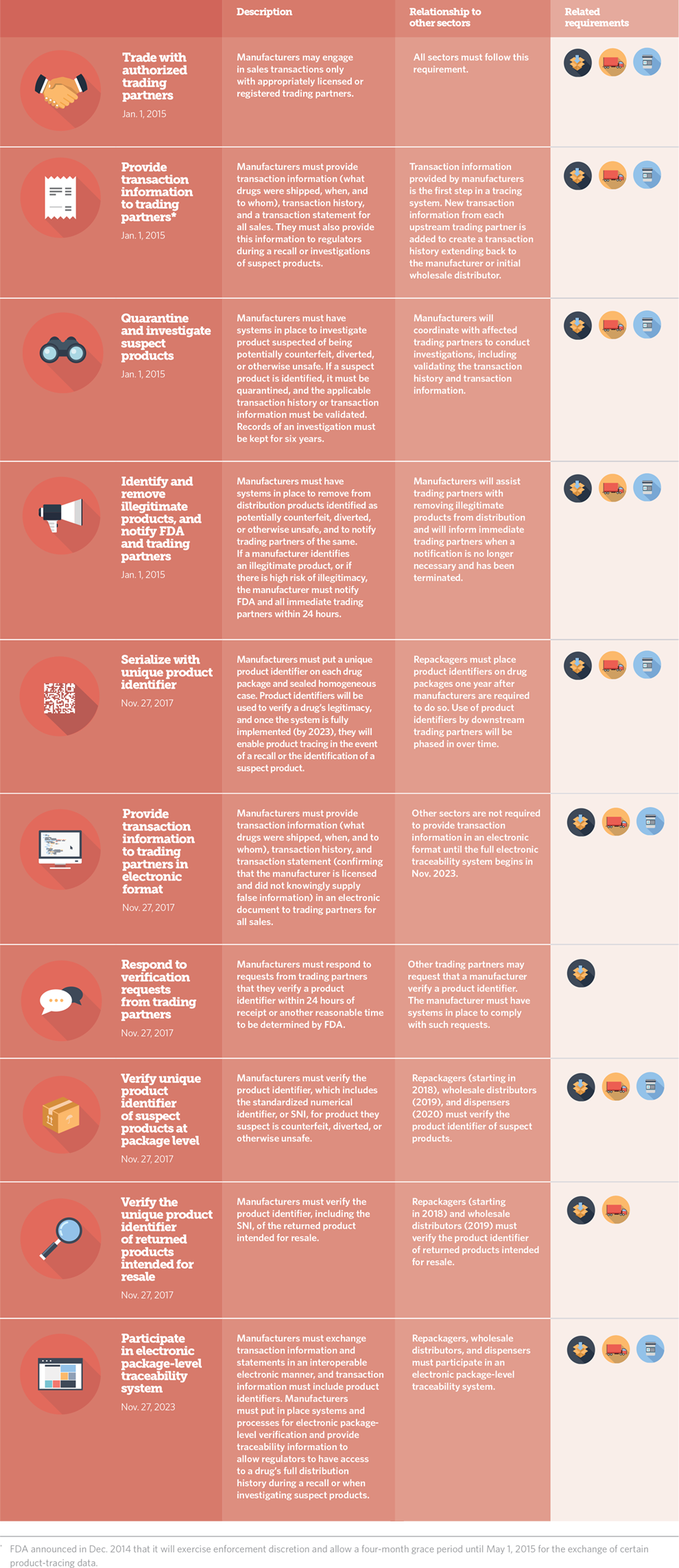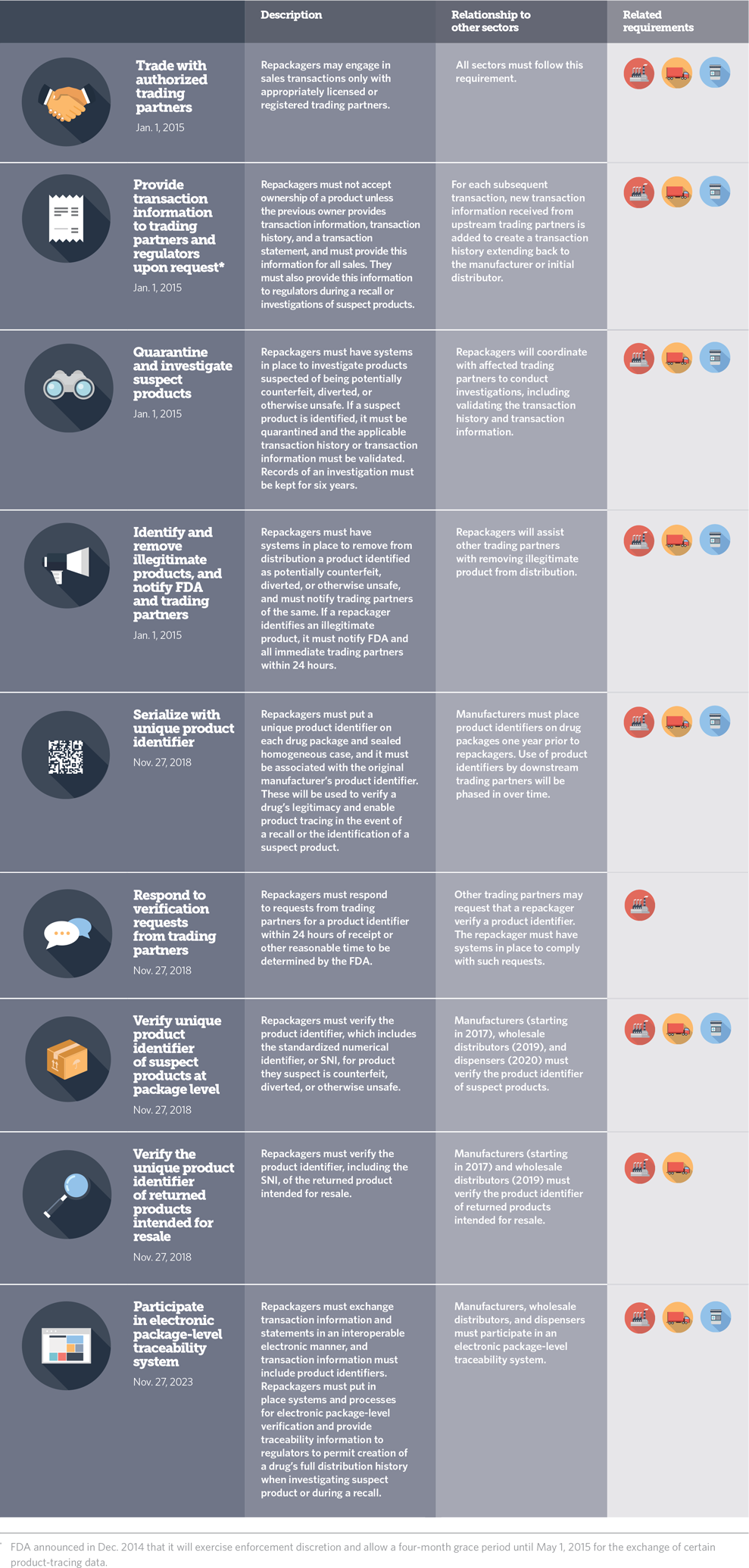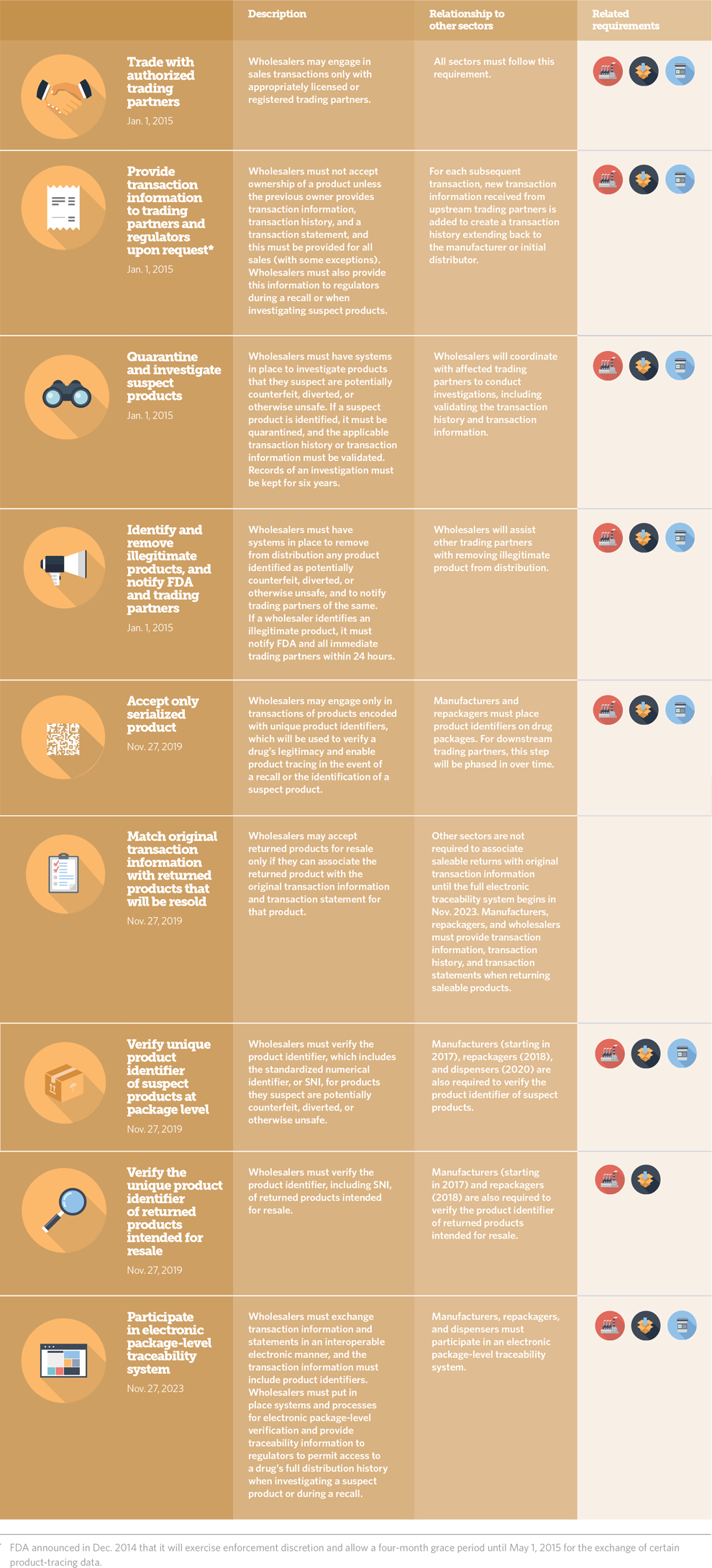Timeline for the Drug Supply Chain Security Act

The data visualization was updated in January 2015 to reflect changes in the U.S. Food and Drug Administration’s enforcement discretion.
The Drug Supply Chain Security Act (Title II, Drug Quality and Security Act, 2013) addresses risks in the pharmaceutical distribution supply chain by establishing a national system that allows stakeholders and regulators to trace each package of product. The serialization and traceability requirements will be phased in over the next 10 years. The law requires all sectors in the supply chain—manufacturers, repackagers, wholesale distributors, and dispensers—to participate.
The following timeline captures key implementation dates for each sector and their relationship to one another in the national system.
DSCSA Implementation: Product Tracing Requirements — Compliance Policy Guidance for Industry (PDF)
Download the timeline (PDF)
Stakeholder Requirements: Drug Supply Chain Security Act (PDF)
 | Manufacturing |  | Repackagers |  | Wholesale Distributors |  | Dispensers |

Manufacturing
Pharmaceutical manufacturers, the first step in the distribution supply chain, develop and produce prescription drugs for consumers and patients. They ship finished medicines to repackagers, wholesale distributors, and directly to dispensers.

| Jump to: top |     |

Repackagers
Manufacturers may not always offer product in the package types that downstream trading partners demand. Repackagers address this supply need by repacking and relabeling pharmaceutical product for further sale or distribution.

| Jump to: top |     |

Wholesale Distributors
Medicines may pass through a series of wholesalers before being delivered to a pharmacy, hospital, physician, or other dispenser. Wholesale distributors purchase pharmaceutical products from manufacturers, repackagers, or other wholesale distributors, and provide them to a variety of customers in the supply chain, including pharmacies, hospitals, and long-term care or other medical facilities.

| Jump to: top |     |

Dispensers
As the last step in the pharmaceutical distribution supply chain, dispensers serve an important role in safely getting medicine to patients. The term "dispensers" can apply to retail and hospital pharmacies, physicians, and others authorized by law to dispense or administer prescription drugs (though most of the requirements placed on dispensers do not apply to physicians).

| Jump to: top |     |
Related: Drug Distribution Security: Title II of the Drug Quality and Security Act
Glossary
Downstream: The directional order in which pharmaceutical product flows—and transactions occur—across the supply chain (from manufacturers, to repackagers, to wholesaler distributors, to dispensers).
Homogeneous case: A sealed case containing only product that has a single National Drug Code number belonging to a single lot.
Interoperable electronic system: System to capture and exchange transaction data for each sale.
National Drug Code: A unique 10-digit, three-segment numeric identifier assigned to each medication prepared for commercial distribution in the United States. The three segments of the NDC identify the labeler, the product, and the commercial package size.
Product identifier: A standardized graphic that includes the standardized numerical identifier, lot number, and expiration date of the product.
Standardized numerical identifier: A set of numbers or characters used to uniquely identify a package or homogeneous case of product; includes a National Drug Code combined with a unique alphanumeric serial number of up to 20 characters.
Transaction history: A statement in paper or electronic form that includes the transaction information for each transaction going back to the point of origin by the manufacturer of the product.
Transaction information: All of the information associated with a transaction including: the name or names of the product, the strength and dosage form of the product, the container size, the number of containers, the lot number, the date of the transaction, the date of the shipment, the business name and address from which ownership is being transferred, and the business name and address to which ownership is being transferred.
Transaction statement: A statement, in paper or electronic form, confirming that the trading partner who is transferring ownership is authorized as required by law, received the product from an authorized person or entity as required by law, received transaction information and a transaction statement from the prior owner of the product, did not knowingly ship a suspect or illegitimate product, did not knowingly provide false transaction information, and did not knowingly alter the transaction history.
Trading partner: A manufacturer, repackager, wholesale distributor, or dispenser from whom a manufacturer, repackager, wholesale distributor, or dispenser accepts ownership of a product.
Upstream: The opposite directional order in which pharmaceutical product flows—and transactions occur—across the supply chain (from dispensers, to wholesaler distributors, to repackagers, to manufacturers).
| Jump to: top |     |






